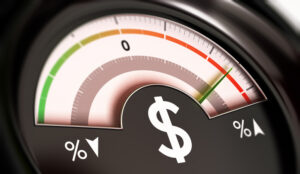Key Inflation Gauge Posts Fastest Annual Price Gain in 30 Years
The comments below are an edited and abridged synopsis of an article by Tom Ozimek
Consumer prices, excluding food and energy components, soared beyond the Fed’s 2% target in the year to June, reaching levels not seen since 1991 and reinforcing concerns about inflation.

The core personal consumption expenditures (PCE) price index, which is the Fed’s preferred method for gauging inflation, rose 3.5% in the 12 months to June, after rising 3.4% in the year to May. The last time core PCE inflation saw a similar year-over-year vault was in July 1991.
While some economists have raised the alarm on inflation, Fed officials and members of the Biden administration have insisted that price rises are temporary, arguing that inflationary pressures will ease as pandemic-related supply chain disruptions are ironed out.
In July, Fed Chair Jay Powell said it is possible that inflation could run hotter and for longer than Fed analysts expect but he thinks that, in the next year or so, inflation will return to the central bank’s target of 2%.
The Fed kept its overnight benchmark interest rate near zero and left its massive asset purchase program unchanged; Powell said that the US economy is still far from making ‘substantial further progress’ towards the Fed’s dual mandate of price stability and maximum employment.
Economists and investors have shifted their concerns from slow growth, high unemployment and deflationary pressures to inflation.
Some economists are concerned that if prices accelerate too fast and stay high for too long, expectations of further price increases will take hold, driving up demand for wages and potentially triggering the kind of wage-price spiral that plagued the US economy in the 1970s.
Meanwhile, more than 80% of Americans are concerned about inflation, and 61% feel inflation will negatively affect their lifestyles.
